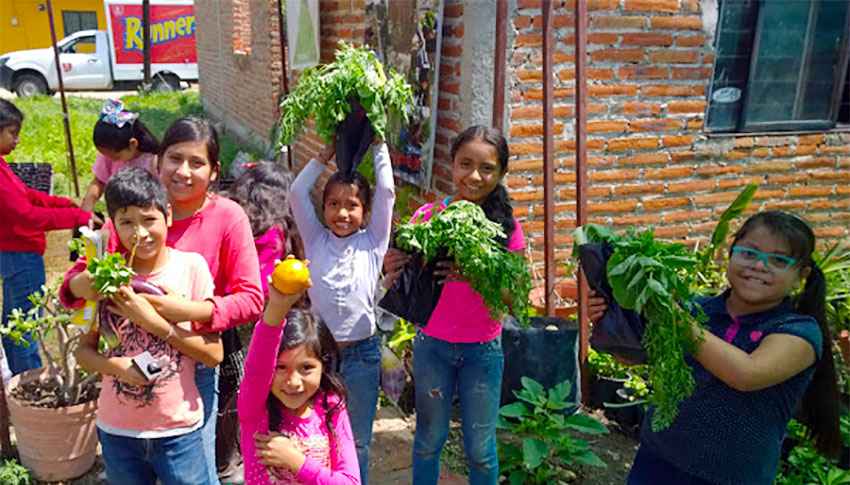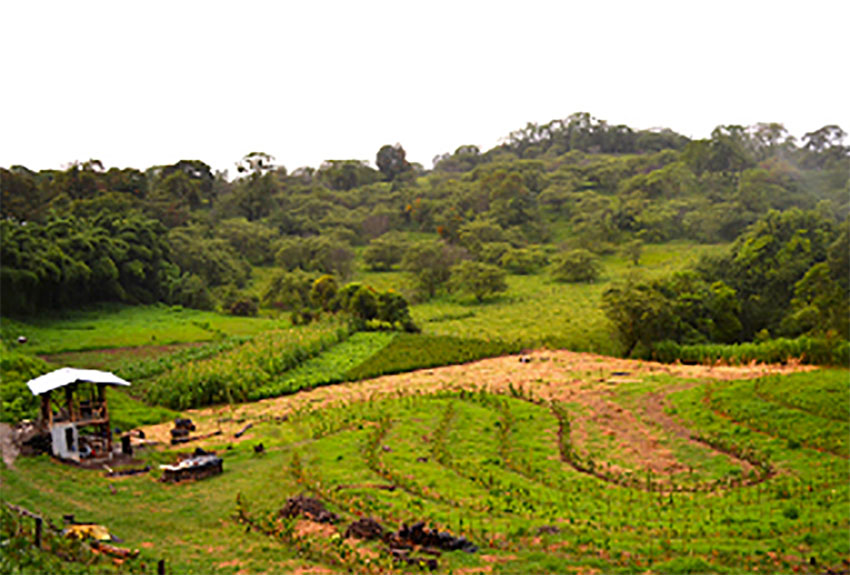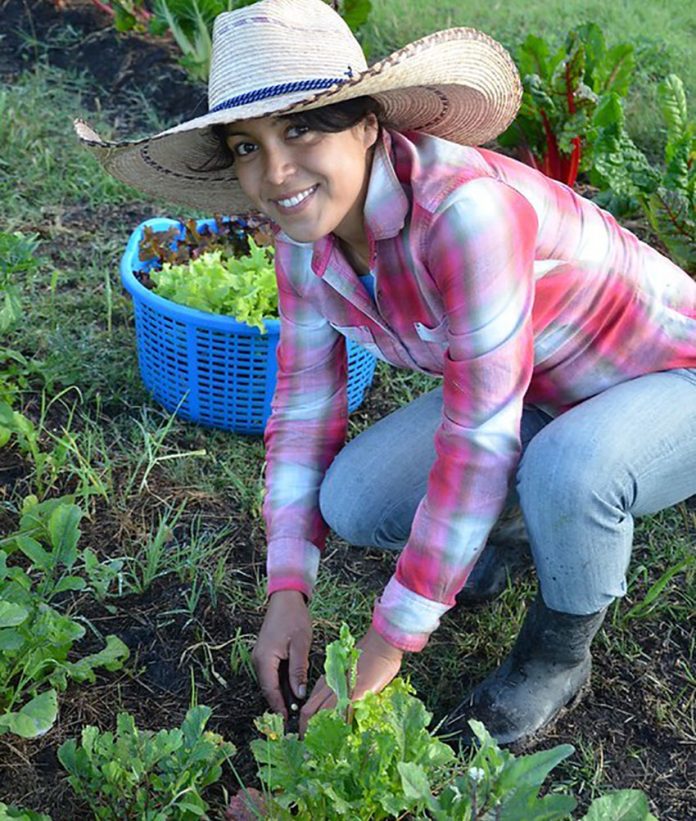Urban gardening is nothing new in Mexico. Lack of space and a growing population led to the invention of chinampas, artificial islands in the lake waters of ancient Mexico City. Today, some of the islands still exist as productive farmland.
The modern concept of reclaiming urban space for agriculture has become popular in Mexico for many of the same reasons as other parts of the world – concerns about the environment, food quality and food availability. It started in the United States, with the victory gardens of World War II, but by the 1980s had spread worldwide.
Mexican urban agricultural organizations are also involved in issues related to genetically modified food, organic farming, food labeling and community building. More recently, Mexico has seen an upsurge of interest in gardening because of Covid-19.
But there are reasons why urban gardening is attractive specifically to Mexico. About 80% of Mexicans now live in urban areas, and much of this population consists of recent migrants from rural areas. In addition, urban sprawl has swallowed former farms and villages.
Poverty is an issue for former rural residents and former rural lands. According to Patricia Iglesias of Tierra Permanente, a Mexico City organization that promotes sustainable agriculture, even small fluctuations in the prices of staples can strain small household budgets. Gardening is one strategy to combat this.

But the issues are not just economic. Mitigating the heat-island effect is particularly important in Mexico as most of the country is in a tropical or semi-tropical zone. Rural migrants and newly urbanized lands are often from highly traditional communities, mestizo and indigenous. These communities risk losing cultural values and the social cohesion that comes with it. This is particularly true for Mexico’s three largest cities: Mexico City, Guadalajara, and Monterrey.
Many urban and community gardens are bottom-up initiatives, but unlike Europe, they tend to be controlled by an individual or well-defined group, with physical restrictions to outsiders. The group may be non-profit, but economic issues tend to dominate over ecological ones.
Mexico can and does grow a wide variety of produce in its urban gardens, which in many places can grow year-round with irrigation. Gardens grow fruit trees, medicinal plants and specialty produce, but the most popular crops are the staples of the Mexican diet: tomatoes, squash, chayote, chile peppers and various greens including lettuce. Iglesias says that even egg production is done in many gardens, something rare in more developed countries.
Urban agriculture is most developed in Mexico City, but gardens and organizations exist all over the country. It includes taking advantage of roofs, balconies, inner courtyards and windowsills along with the more traditional backyards and abandoned lots. From 2013 to 2017 over 63,000 people participated in urban gardening in Mexico City alone.
Although most projects supplement family food supplies, urban gardens exist for other reasons, mostly concerns related to commercial agriculture. These gardens tend to produce organically and work to increase awareness about problems with pesticides, the development of seeds (including GMO) and depletion of soils.
Some gardens exist to produce gourmet and specialty produce such as uncommon species of mushrooms and plants that were common in the pre-Hispanic diet. Some give the long-term unemployed a chance to contribute economically. There are even corporations that have installed gardens on their grounds, with the produce used in their own cafeterias.

Only 24% of Mexico’s urban residents have access to green spaces. Government agencies, especially at the local and state level, support urban gardening with resources such as space, compost, information and legal rights. In 2017, the city passed a law specifically stating that residents have the right to an urban garden, and all government agencies are required to have at least one in their installations. The capital was named one of five cities in Latin America doing the most to promote urban agriculture by the UN Food and Agriculture Organization.
Just about all of Mexico’s major cities have urban gardening initiatives, almost all of which were started in the past 15 years. These include Huerto Tlatelolco, Huerto Roma Verde and the Cultiva Tu Espacio programs in Mexico City, along with the Colectivo Hurto Agroecológico Universitario and Huerto Comunitario Mejor Santa Tere in Guadalajara. The Huertos Familiares program in Monterrey provides fresh vegetables for 300 families in 39 neighborhoods. The first program in Mérida was established by the municipality in 2018.
Non-profit urban agriculture organizations accept volunteers, and many offer other kinds of services including cultural activities, cooking classes and workshops on a myriad of topics from composting to reclaiming wastewater and even non-gardening topics. Because of the Covid-19 situation, almost all are physically closed at present, but many are offering classes and other services online, although in Spanish. Many for-profit businesses also exist, catering to urban gardeners. Many of them are in Mexico City but can ship nationwide.
Those initiatives near areas where many expats live are likely to have workshops and services for non-Spanish speakers. Huerto Roma Verde has members who speak German, French and Japanese as well as English. Rancho Ecológico, just outside of San Miguel Allende, has one founder who is American. Vivero La Esperanza on Lake Chapala is run by Francisco Nava, who speaks English, and Chapala proper has the Lake Chapala Garden Club as well.
On Lake Pátzcuaro there is Tierramor, which was cofounded by Holger Hieronimi, originally from Germany. If you do speak Spanish and live in a rainforest area, Las Cañadas Centro de Agroecología y Permacultura in Veracruz offers 20-day intensive apprenticeships.
Another way to find urban and community gardeners is through businesses that share their worldview, especially health food restaurants and cafes. Several organizations were found for this report by contacting business such as Huerto Café in Chapala and The Green Place in Puerto Vallarta.
Leigh Thelmadatter arrived in Mexico 17 years ago and fell in love with the land and the culture. She publishes a blog called Creative Hands of Mexicoand her first book, Mexican Cartonería: Paper, Paste and Fiesta, was published last year. Her culture blog appears weekly on Mexico News Daily.
